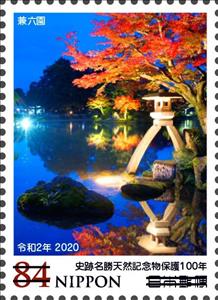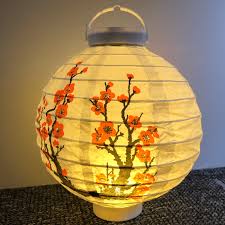Stamp: Kenroku-en (Japan 2020)
Kenroku-en (Japan 2020)
17 July (Japan ) within release National Monuments System Centenary (2020) goes into circulation Stamp Kenroku-en face value 84 Japanese yen
| Stamp Kenroku-en in catalogues | |
|---|---|
| Colnect codes: | Col: JP 2020-26g |
Stamp is vertical format.
Also in the issue National Monuments System Centenary (2020):
- Mini Sheet - National Monuments System Centenary face value 10*84;
- Stamp - Goryōkaku face value 84;
- Stamp - Nakijin Castle Ruins face value 84;
- Stamp - Heijō Palace East Palace Garden face value 84;
- Stamp - Yohinogari Archaeological Site face value 84;
- Stamp - Kamikōchi face value 84;
- Se-tenant - Kamikōchi face value 2*84;
- Stamp - Kamikōchi face value 84;
- Stamp - Kenroku-en face value 84;
- Stamp - Amanohashidate face value 84;
- Stamp - Kamoshika / Japanese serow (Capricornis crispus) face value 84;
- Stamp - Kōnotori / Oriental White Stork (Ciconia boyciana) face value 84;
|
Data entry completed
83%
|
|
|---|---|
| Stamp Kenroku-en in digits | |
| Country: | Japan |
| Date: | 2020-07-17 |
| Print: | Offset lithography |
| Size: | 28 x 38.5 |
| Emission: | Commemorative |
| Format: | Stamp |
| Face Value: | 84 Japanese yen |
Stamp Kenroku-en it reflects the thematic directions:
A landscape is the visible features of an area of land, its landforms and how they integrate with natural or man-made features. A landscape includes the physical elements of geophysically defined landforms such as (ice-capped) mountains, hills, water bodies such as rivers, lakes, ponds and the sea, living elements of land cover including indigenous vegetation, human elements including different forms of land use, buildings and structures, and transitory elements such as lighting and weather conditions. Combining both their physical origins and the cultural overlay of human presence, often created over millennia, landscapes reflect a living synthesis of people and place that is vital to local and national identity. The character of a landscape helps define the self-image of the people who inhabit it and a sense of place that differentiates one region from other regions. It is the dynamic backdrop to people’s lives. Landscape can be as varied as farmland, a landscape park, or wilderness. The earth has a vast range of landscapes, including the icy landscapes of polar regions, mountainous landscapes, vast arid desert landscapes, islands and coastal landscapes, densely forested or wooded landscapes including past boreal forests and tropical rainforests, and agricultural landscapes of temperate and tropical regions.
A lantern is an often portable source of lighting, typically featuring a protective enclosure for the light source – historically usually a candle, a wick in oil, or a thermoluminescent mesh, and often a battery-powered light in modern times – to make it easier to carry and hang up, and make it more reliable outdoors or in drafty interiors. Lanterns may also be used for signaling, as torches, or as general light-sources outdoors.
A monument is a type of structure that was explicitly created to commemorate a person or event, or which has become relevant to a social group as a part of their remembrance of historic times or cultural heritage, due to its artistic, historical, political, technical or architectural importance. Examples of monuments include statues, (war) memorials, historical buildings, archaeological sites, and cultural assets. If there is a public interest in its preservation, a monument can for example be listed as a UNESCO World Heritage Site. The Palgrave Encyclopedia of Cultural Heritage and Conflict gives the next definition of monument:



